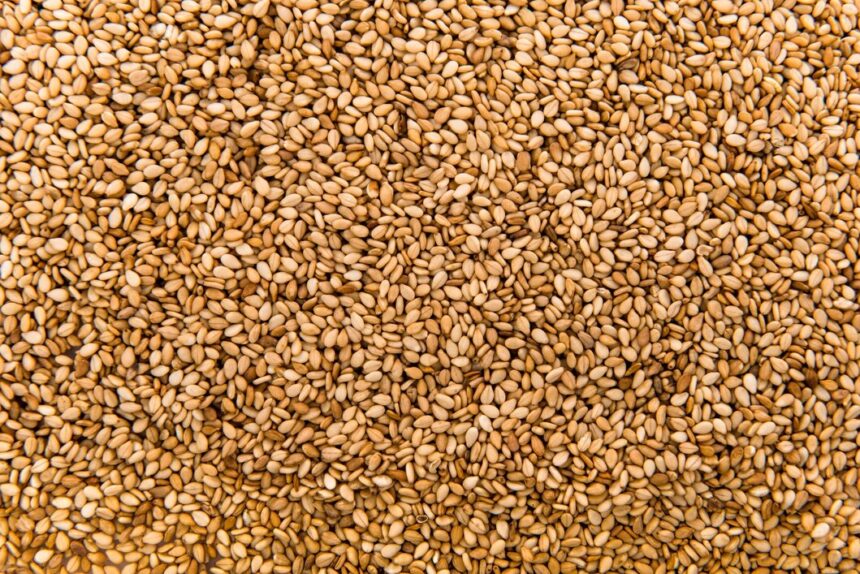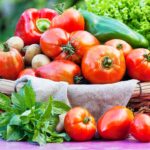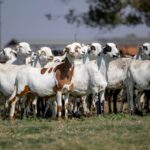Sesame seeds are increasingly becoming a popular crop for South African farmers due to their high demand in the food and oil industries. Sesame is a drought-tolerant crop, making it suitable for many regions in South Africa with semi-arid climates. However, growing sesame successfully requires proper knowledge of the crop’s growth stages, inputs, and management practices.
In this guide, we’ll cover each stage of sesame cultivation, from land preparation to harvesting and storage, along with tips on soil, water, fertilizer, disease management, and pesticide use.
1. Land Preparation
Soil Requirements
- Type of Soil: Sesame grows best in well-drained loamy or sandy soils with a pH of 5.5 to 8.0. The crop is intolerant of waterlogged conditions, so fields prone to flooding should be avoided.
- Soil Fertility: It is essential to ensure that the soil has adequate levels of organic matter. Conducting a soil test before planting can help determine if any nutrients are deficient.
Land Preparation
- Tillage: Start by plowing the land to a depth of 15-25 cm to loosen the soil. Harrow the field to break up clods and level the surface. A fine seedbed is critical for proper seed germination and root development.
- Ridges or Flat Planting: Depending on the region’s rainfall patterns, sesame can be planted on ridges or flat ground. In areas with high rainfall, ridges are preferable to enhance drainage.
2. Seed Selection and Planting
Seed Selection
Choose high-quality sesame seeds that are resistant to local pests and diseases. Certified seeds from reputable suppliers ensure higher germination rates and better yield potential.
Planting Time
In South Africa, sesame is typically planted at the onset of the summer rainy season (November to January). This ensures the crop has sufficient moisture during its early growth stages.
Planting Method
- Spacing: Sesame is planted in rows with a spacing of 40-60 cm between rows and 10-15 cm between plants. This spacing promotes air circulation and reduces the risk of fungal infections.
- Seeding Rate: Use approximately 2-3 kg of seed per hectare. Seeds should be sown shallowly at a depth of 1-2 cm to ensure good germination.
- Mechanization: A seed drill can be used for precision planting. For small-scale farmers, manual broadcasting or using hand planters can also be effective.
3. Watering and Irrigation
Sesame is a drought-tolerant crop, but it still requires adequate moisture during certain stages of its growth:
- Germination and Seedling Stage: Watering is critical during this period to ensure that seeds germinate and seedlings establish well. If natural rainfall is insufficient, provide light irrigation.
- Flowering Stage: Sesame requires moderate watering during the flowering period, as water stress can result in poor pod formation.
- Water Requirements: Sesame requires 300-600 mm of water throughout the growing season. However, over-irrigation can lead to root rot and other fungal diseases, so monitor soil moisture closely.
4. Fertilization
Fertilizer Requirements
- Nutrient Needs: Sesame responds well to fertilizers, especially nitrogen (N), phosphorus (P), and potassium (K).
- Nitrogen: 30-50 kg per hectare is recommended to support vegetative growth.
- Phosphorus: 20-30 kg per hectare to promote root development.
- Potassium: 20-30 kg per hectare helps in improving seed quality and oil content.
Apply a basal dose of phosphorus and potassium before planting and split the nitrogen application. Half should be applied at planting, and the other half during the early flowering stage.
Organic Fertilizers
Incorporating compost or manure into the soil before planting can improve soil structure and increase organic matter content, helping with water retention and nutrient availability.
5. Pest and Disease Management
Common Pests
- Sesame Leaf Roller: This pest feeds on young leaves, causing defoliation. It is more prevalent in warm, humid conditions.
- Aphids: Aphids can infest sesame plants, sucking sap from the leaves and transmitting viral diseases.
- Whiteflies: Whiteflies can also damage the crop by feeding on plant sap, leading to stunted growth.
Common Diseases
- Alternaria Leaf Spot: A fungal disease that causes spots on leaves, eventually leading to leaf drop.
- Cercospora Leaf Spot: Another fungal infection that affects sesame leaves, reducing the plant’s ability to photosynthesize effectively.
- Fusarium Wilt: This soil-borne disease causes wilting and stunted growth. It thrives in poorly drained soils.
Pest and Disease Control
- Pesticides: Use insecticides like pyrethroids or neem-based products to control aphids, whiteflies, and leaf rollers. Only apply pesticides when pest infestation reaches an economic threshold to avoid harming beneficial insects.
- Fungicides: For fungal diseases, apply copper-based fungicides or products containing mancozeb early in the growing season when symptoms first appear. Proper crop rotation and the use of disease-resistant varieties can also help prevent these issues.
- Herbicides: Pre-emergence herbicides such as metolachlor can be applied to control weeds before sesame emerges. Post-emergence herbicides should be used with care to avoid damaging the crop.
6. Growth Stages of Sesame
1. Germination (7-10 Days)
Sesame seeds germinate within a week if they are planted in warm soil (around 25-30°C) with adequate moisture. During this stage, avoid overwatering, as this can cause damping-off.
2. Seedling Stage (2-3 Weeks)
Seedlings require sufficient sunlight and moisture to develop a strong root system. Weeding should be done early to minimize competition for nutrients.
3. Vegetative Growth (4-6 Weeks)
The plant grows rapidly during this stage, forming new leaves and branches. Nitrogen application at this stage supports healthy growth.
4. Flowering (6-8 Weeks)
Sesame begins to flower after 6-8 weeks. This is a critical stage that determines the number of pods that will form. Adequate water and proper pest management are crucial.
5. Pod Formation (9-12 Weeks)
After flowering, sesame plants develop pods. Each plant can produce multiple pods containing seeds. Water stress during this period can reduce pod set.
7. Harvesting
Maturity
Sesame is ready for harvest 90-120 days after planting. The crop is mature when the lower leaves start yellowing and the pods turn light brown. Harvesting too early can result in immature seeds, while late harvesting can cause seed shattering.
Harvesting Methods
- Manual Harvesting: Cut the plants by hand using sickles and bundle them for drying. This method is labor-intensive but allows better control over seed shattering.
- Mechanical Harvesting: For large-scale farms, combine harvesters can be used. These machines are efficient but require careful timing to avoid losing seeds during shattering.
8. Post-Harvest Processing and Storage
Drying
After harvesting, sesame plants are bundled and left to dry in the field or under cover. The pods naturally open as they dry, allowing the seeds to be easily collected.
Threshing
Once dry, the seeds are threshed by beating the plants or using mechanical threshers. The seeds are then cleaned to remove dirt, plant debris, and unripe seeds.
Storage
Sesame seeds should be stored in a cool, dry place with moisture content reduced to about 6-8% to prevent mold growth. Proper storage is critical to maintaining seed quality and preventing insect infestation. Use airtight containers or silos, and treat seeds with natural repellents or store in fumigated facilities if necessary.
Growing sesame in South Africa can be a profitable venture, given its adaptability to dry climates and the increasing global demand for sesame products. By understanding the various growth stages, input requirements, and management practices, farmers can optimize yields and ensure a successful harvest. Proper land preparation, pest management, and efficient use of water and fertilizers are key to making sesame farming a sustainable and rewarding business.
Join 'Farmers Mag' WhatsApp Channel
Get the latest Farming news and tips delivered straight to your WhatsApp
CLICK HERE TO JOIN






